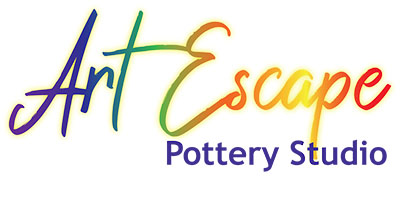Hello, my environmentally conscious pottery enthusiasts! Today, let’s delve into the profound impact that being a ceramic artist can have on promoting environmental awareness. As your dedicated pottery teacher who cares deeply about our planet, let’s explore how the journey of working with clay extends far beyond the studio, encompassing environmental considerations that echo through various aspects of our craft.
Firstly, let’s talk about the clay itself. Being aware of the sources from which clay is mined is an essential aspect of environmental consciousness. Responsible clay sourcing involves selecting suppliers who adhere to sustainable practices, minimizing ecological impact, and prioritizing the preservation of natural landscapes. As ceramic artists, understanding the origins of our materials allows us to make informed choices that align with our commitment to environmental stewardship.
Furthermore, the mindful use of clay is crucial. Clay extraction can disrupt ecosystems and landscapes, leading to soil erosion and habitat loss. By being conscientious about the quantity of clay we use in our projects, we contribute to sustainable resource management. Reusing clay scraps, practicing efficient clay usage, and exploring alternative materials are ways in which ceramic artists can minimize their environmental footprint and promote responsible resource utilization.
Firing pottery in kilns is another aspect where environmental awareness plays a significant role. Traditional kilns often consume a substantial amount of energy, contributing to carbon emissions. However, adopting eco-friendly firing methods, such as electric or solar-powered kilns, and optimizing firing schedules for energy efficiency, are steps ceramic artists can take to align their craft with environmental consciousness.
Exploring alternative firing techniques, such as pit firing or raku, can also be environmentally friendly. These methods often require less energy compared to conventional high-temperature firing, reducing the environmental impact associated with the firing process. Additionally, they offer unique opportunities for artistic expression, showcasing how sustainability and creativity can beautifully intersect in the world of ceramics.
As ceramic artists, we have the power to influence the longevity of our creations. By creating durable, high-quality pieces that withstand the test of time, we contribute to reducing the demand for constant production and consumption. This longevity aligns with the principles of environmental awareness, promoting a shift from a disposable culture to one that values the enduring beauty of handmade, lasting pottery.
Consideration for glazes is another vital element in our journey toward environmental responsibility. Traditional glazes may contain harmful chemicals and heavy metals. Opting for lead-free, low-impact glazes and exploring natural alternatives, like ash glazes or food-safe materials, exemplifies a commitment to both artistic excellence and environmental health. Being knowledgeable about the environmental impact of our glazing choices is an integral part of our responsibility as ceramic artists.
Moreover, the thoughtful disposal of studio waste is a crucial component of environmental awareness. Recycling clay scraps, properly managing glaze materials, and minimizing waste generation in the studio contribute to sustainable pottery practices. Implementing effective waste reduction strategies reflects our commitment to leaving a positive, eco-friendly imprint on the planet.
In our role as ceramic artists, we can also advocate for the broader adoption of environmentally conscious practices within the pottery community. Sharing insights on sustainable sourcing, eco-friendly firing methods, and responsible studio waste management fosters a collective commitment to environmental stewardship. Through collaboration and shared knowledge, we can inspire positive change within our artistic community and beyond.
Participating in local and global initiatives focused on sustainable practices in ceramics further amplifies our impact. Engaging with organizations that promote eco-friendly approaches, attending workshops on sustainable pottery practices, and contributing to conversations on environmental responsibility within the ceramics community are powerful ways to catalyze positive change.
Teaching environmental awareness to our students is a fundamental aspect of our role as pottery educators. By instilling a sense of responsibility and mindfulness in our students, we contribute to the next generation of ceramic artists who approach their craft with a deep understanding of its environmental implications. Cultivating a culture of sustainability within our classrooms ensures that the principles of environmental consciousness become integral to the future of pottery.
Promoting a circular economy in the pottery community is another avenue for environmental advocacy. Encouraging practices such as reclaiming clay, repurposing fired pieces, and engaging in community clay recycling programs contributes to a closed-loop system that minimizes waste and promotes sustainable resource utilization. By actively participating in the circular economy, ceramic artists become agents of positive change in the broader context of environmental sustainability.
Exploring and experimenting with sustainable materials is an exciting aspect of being an environmentally aware ceramic artist. From utilizing recycled clay to incorporating environmentally friendly pigments and materials, the possibilities for creating eco-conscious pottery are vast. These explorations not only align with environmental principles but also open up new avenues for artistic expression within the framework of sustainability.
Embracing a holistic view of our craft, one that considers every stage from material sourcing to the lifespan of our creations, allows us to be stewards of the environment through our work as ceramic artists. By continuously educating ourselves, making informed choices, and advocating for sustainable practices, we contribute to the broader movement toward environmental awareness within the field of ceramics.
In conclusion, being a ceramic artist is not merely about crafting beautiful pieces but also about embodying environmental awareness. From the sourcing of clay to the firing process, glazing choices, waste management, and teaching sustainable practices, every aspect of our craft offers an opportunity to make a positive impact on the environment. As your devoted pottery teacher, I encourage you to embrace this journey of eco-conscious creativity, recognizing the transformative potential that lies in the intersection of pottery and environmental responsibility. Together, let’s shape a future where the beauty of ceramics coexists harmoniously with the well-being of our planet.

